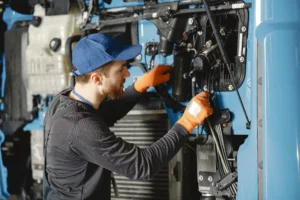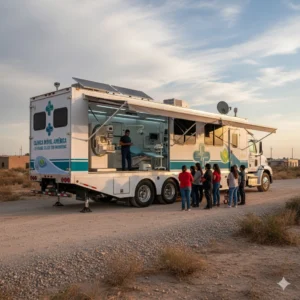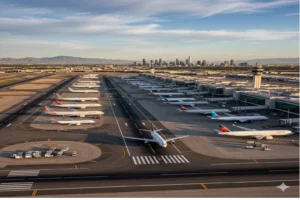Landmark changes reshape pricing, density rules, and digital tools for shippers and carriers
A sweeping overhaul to the U.S. Less-Than-Truckload (LTL) freight classification system went into effect this past Saturday, introducing the most transformative changes the industry has seen in decades. This game-changing NMFC update marks a pivotal shift in how freight is categorized and priced nationwide.
The National Motor Freight Traffic Association (NMFTA) — the nonprofit organization responsible for managing freight classification standards — has modernized its nearly 100-year-old National Motor Freight Classification (NMFC) system. The revamped framework is designed to better reflect the realities of today’s logistics environment.
Following months of internal review, industry consultation, and public input, the revised NMFC now places freight density at the center of classification criteria, unless factors such as handling difficulty, liability risks, or stowability present significant exceptions. The overarching objective is to ensure a more accurate and transparent pricing structure based on volume, weight, and operational risk.
What Changed: From Tradition to Density-Based Logic
Previously, NMFC considered multiple attributes like item type, ease of handling, risk of damage or theft, and storage efficiency. Under the new model, density now drives the classification for most commodities.
“LTL carriers wanted the full impact of these changes to be felt across the supply chain — both for them and shippers,” said Scooter Sayers, business development director at Cubiscan, a freight dimensioning technology provider.

Key Technical Adjustments
The revised system expands the density-based subprovisions from 11 to 13 categories:
Subprovision 11: 30–34.9 lbs/ft³ → Class 60
Subprovision 12: 35–49.9 lbs/ft³ → Class 55
Subprovision 13: 50+ lbs/ft³ → Class 50
Roughly 2,000 out of 5,000 items under review were reclassified — a sweeping update for manufacturers, shippers, and 3PLs alike.
ClassIT+ Relaunch & Tech Upgrades
To support implementation, NMFTA reintroduced ClassIT+, its online freight classification tool, with major enhancements:
More comprehensive APIs
Improved search functionality
Faster response times
These features are designed to minimize errors, reduce post-shipment disputes, and ease classification compliance.
What It Means for Shippers
For U.S. shippers, the revamped NMFC promises clearer billing, fewer disputes, and a more consistent process. But the benefits come with responsibilities:
Audit product classes and verify dimensions, weight, and density
Invest in precision measuring tools
Redesign packaging to optimize density and avoid higher-class charges
“Shippers who digitize weight, dimensions, and image capture will come out ahead,” said Sayers.
“Carriers will reward accurate data with better rates and service.”
FAK Programs on the Way Out
One of the biggest shifts is the decline of FAK (Freight-All-Kinds) agreements — which allowed bundling of various items under a single rate class. These are likely to be phased out or priced at a premium under the new density-centric system.
“July 19 is just the beginning,” said Sayers.
“Soon, nearly all commodities will be classified — at least in part — by density. It’s the true cost driver in LTL shipping.”
⚙️ What the New NMFC Aims to Deliver
Transparent pricing from the start
Fewer post-billing disputes
Fairer outcomes for carriers and customers
Incentives for digital tools and smarter logistics
This structural transformation of the LTL landscape will affect major freight carriers, regional operators, and small businesses alike. The winners will be those who adapt early — auditing, optimizing, and investing in precision.

World Mental Health Day: how to care for truck drivers’ mental health
As part of World Mental Health Day, we focus on caring for the mental health of truck drivers. World Mental Health Day reminds us that

Solving the shortage of diesel technicians
The role of the transport industry in combating the shortage of diesel technicians: what should be done to solve it? In August 2025, the American

Mobile Clinics: The Unsung Heroes Bringing Healthcare to America’s Highways
The drivers of these massive trailers have become the unsung heroes of America’s roads, delivering life-saving medical services to every corner of the country.

Ending CDL reciprocity: the U.S. seeks stricter measures
New bill would require states to comply with the strict CDL regulations recently established. The U.S. House of Representatives has introduced new legislation aimed at

Cargo theft costs the transportation industry $18 million in losses
Cargo theft has been one of the most persistent issues facing the freight transportation industry so far in 2025. Cargo theft has been one of

Duffy Secures $41 Million to Save Essential Air Service as Shutdown Threat Looms
U.S. Transportation Secretary Sean P. Duffy announced on Wednesday that the Department of Transportation (DOT) has secured $41 million in additional emergency funding to sustain the Essential Air Service (EAS) program, a federal initiative that subsidizes commercial flights to rural and underserved communities across the United States.
